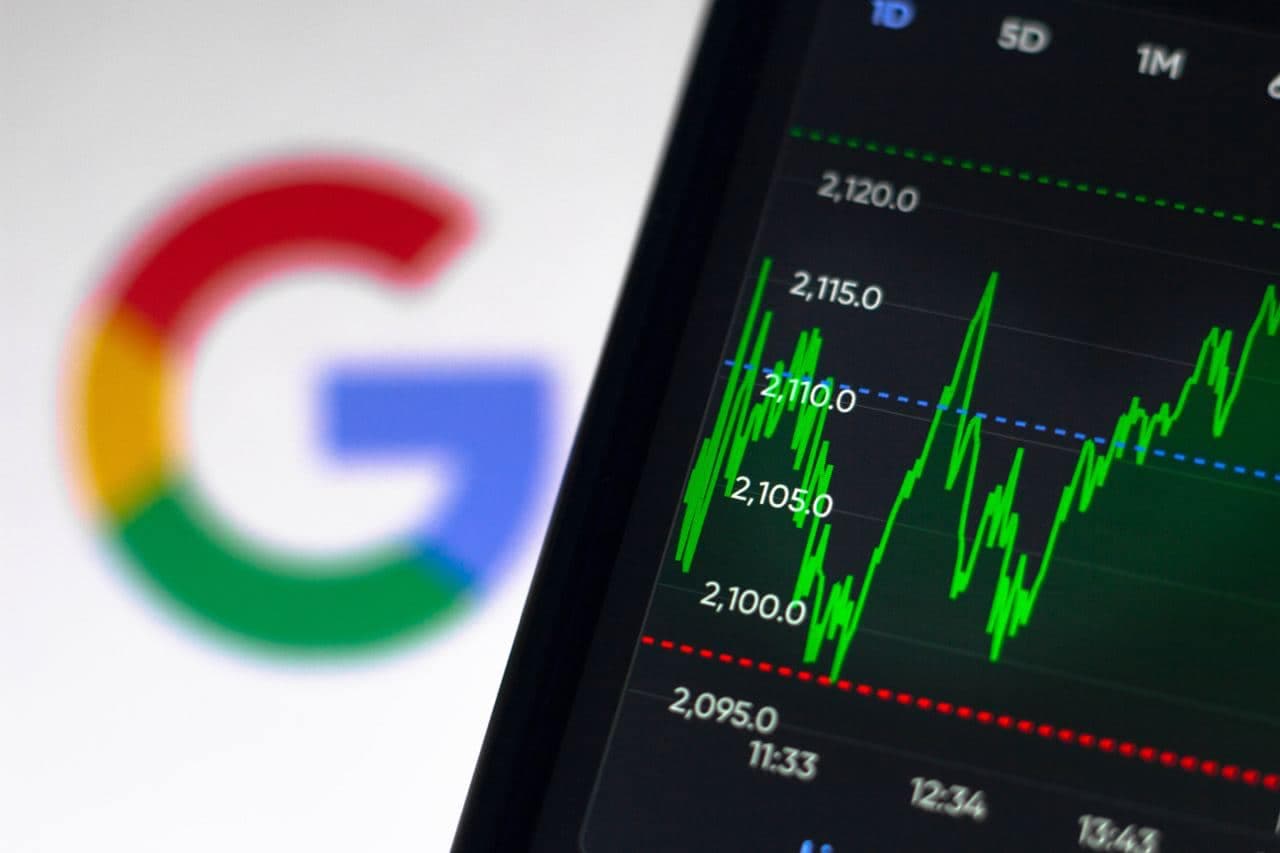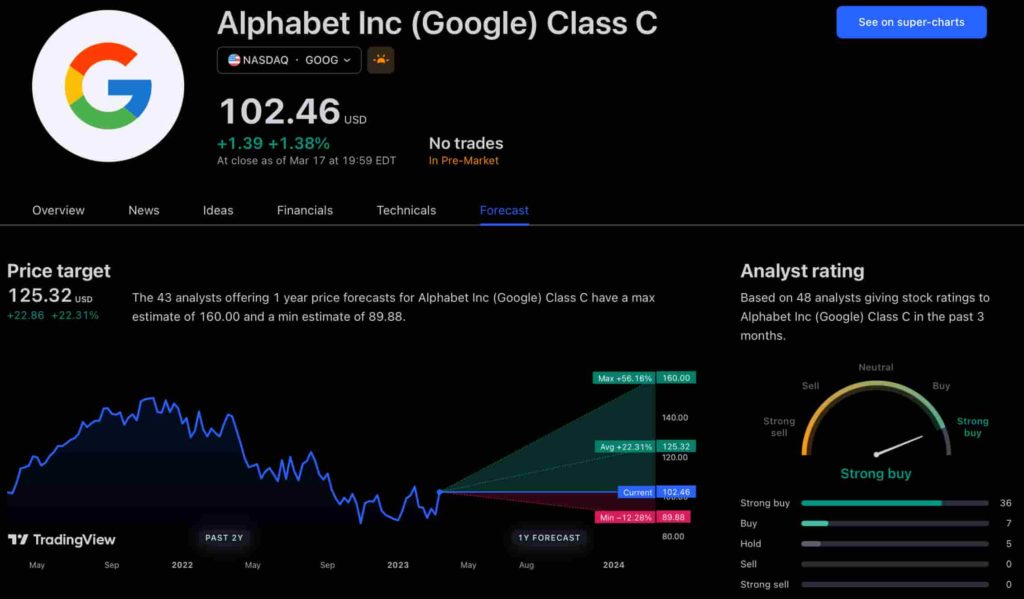The new app is called watchGPT and as I tipped off already, it gives you access to ChatGPT from your Apple Watch. Now the $10,000 question (or more accurately the $3.99 question, as that is the one-time cost of the app) is why having ChatGPT on your wrist is remotely necessary, so let’s dive into what exactly the app can do.
NEWS
Google: Sites Need to Be Worthwhile to be Indexed via @sejournal, @martinibuster

Google’s John Mueller offered more information about that pesky “Discovered – but currently not indexed” message in Google Search Console. Mueller answered a series of tweets about what’s going on at Google when they choose to not index a URL.
Is Google Indexing Bugged?
There are numerous discussions on Twitter and Facebook about notices that a URL has been discovered but not indexed because it’s troubling to work on content and see it appear to be rejected by Google.
Search Marketing professional Dan Shure (@dan_shure) started a Twitter thread about this topic sharing how a new article was discovered but not indexed.
Dan shared the example of a client site that published two articles and days went by showing up as Discovered but currently not indexed.
They submitted the URLs for a re-crawl but Google essentially turned its back on those pages, refusing to index them.
Could the URL Be Blocked After Being Discovered?
So Dan floats the idea that maybe the URL itself, after being discovered and not indexed, is burned at this point and decides to remove the old URL and paste the content on a new URL.
Advertisement
Continue Reading Below
That’s a really good idea to scrap the old URL and basically try again with a different URL.
He tweeted:
“So by last Friday we’d been waiting 10+ days (even new posts were being indexed)
I thought, is the *URL itself* ‘dinged’?
So we deleted one of the posts, copied/pasted the same content exactly & re-published on a new page with a slightly different URL & new publish date “
Dan continued in the next tweet:
“The post on the new URL (but same content) indexes IMMEDIATELY (without even submitting it to GSC) in just a few hours.
The OTHER post which we left alone still was not indexed though.
We’re going to move that one to a new URL/date now and see if the same thing happens.”
Dan concluded that there must have been something about that URL.
“We know Google indexes content using the URL as basically the main “id” by which all signals are associated.. so it could make sense if a URL gets “Discovered but not indexed” on the first pass it gets some sort of “ding” – maybe something to try if you run into this problem”
Advertisement
Continue Reading Below
Nothing New or Special About Discovered/Not Indexed
Google’s John Mueller questioned whether the tool was confusing people and whether Google should just remove it.
There’s nothing really special or new about “discovered / not indexed” — it’s mostly just that this was previously (before it got added to SC) not something you saw. It’s essentially “we saw you, but maybe later, or never”. Does it confuse people too much? Should we remove it?
— 🧀 John 🧀 (@JohnMu) November 8, 2021
Teetering on the Edge of Indexing
Mueller acknowledged that sometimes the same content will get indexed under a new URL in situations where the site is “teetering on the edge of indexing” which could mean many things such as overall site quality.
That’s a really useful bit of insight Mueller shared:
“Yeah, that can happen. But it can also happen that it drops out again a week later, or a different URL drops out.
If you’re teetering on the edge of indexing, there’s always fluctuation.
It basically means you need to convince Google that it’s worthwhile to index more.”
John followed up with a deeper explanation:
“Since we don’t have an understanding of the URL (it’s not indexed), we have to pull in the rest of the site to better understand its potential context within the site, and within the rest of the web. Is it something the web has been waiting for? Or is it just another red widget?”
When pressed to explain how to convince Google to index something John Mueller responded with:
“Awesomeness.
Lots of awesomeness.
All kinds of awesomeness.
And add more awesomeness.”
What is Awesomeness?
Be awesome makes sense and doesn’t need explanation. But it is kind of vague.
I prefer something like: Don’t do what everyone else is doing, just do it how you feel is best.
Or something like: Create something that would have made you excited when you were new to the topic.
More is Not Better
That whole thing about do it “Ten Times Better” is motivational but naive because more does not equal better.
Advertisement
Continue Reading Below
Another common mistake is to copy the competitors, to use their same keywords and synonyms (as if there’s magic in their keywords) because that leads to essentially rewritten content.
Prince didn’t become famous by copying Michael Jackson, right?
So why are SEOs so hung up on taking inspiration from what already ranks in the top ten? It makes sense to see what Google is ranking but it stops making sense when an SEO starts to rewrite what is already ranking.
If you know the topic and are good at it, then why not try not looking at what the competitors are doing and just do your best? Maybe Google might recognize a singular voice in your site, others will call it awesome and it probably won’t have issues getting indexed.
Citation
Read the Twitter discussion:
Could “Discovered – but currently not indexed” put a URL in some sort of ‘blacklist’?
Could “Discovered – but currently not indexed” put a URL in some sort of ‘blacklist’?
Thought I’d share something strange and interesting that happened w/a few blog posts of a client..
(1/5) (I hate doing threads but this needs a little detail) 👇🏻
— Dan Shure (@dan_shure) November 8, 2021
Advertisement
Continue Reading Below
Facebook Faces Yet Another Outage: Platform Encounters Technical Issues Again

Uppdated: It seems that today’s issues with Facebook haven’t affected as many users as the last time. A smaller group of people appears to be impacted this time around, which is a relief compared to the larger incident before. Nevertheless, it’s still frustrating for those affected, and hopefully, the issues will be resolved soon by the Facebook team.
Facebook had another problem today (March 20, 2024). According to Downdetector, a website that shows when other websites are not working, many people had trouble using Facebook.
This isn’t the first time Facebook has had issues. Just a little while ago, there was another problem that stopped people from using the site. Today, when people tried to use Facebook, it didn’t work like it should. People couldn’t see their friends’ posts, and sometimes the website wouldn’t even load.
Downdetector, which watches out for problems on websites, showed that lots of people were having trouble with Facebook. People from all over the world said they couldn’t use the site, and they were not happy about it.
When websites like Facebook have problems, it affects a lot of people. It’s not just about not being able to see posts or chat with friends. It can also impact businesses that use Facebook to reach customers.
Since Facebook owns Messenger and Instagram, the problems with Facebook also meant that people had trouble using these apps. It made the situation even more frustrating for many users, who rely on these apps to stay connected with others.
During this recent problem, one thing is obvious: the internet is always changing, and even big websites like Facebook can have problems. While people wait for Facebook to fix the issue, it shows us how easily things online can go wrong. It’s a good reminder that we should have backup plans for staying connected online, just in case something like this happens again.
NEWS
We asked ChatGPT what will be Google (GOOG) stock price for 2030

Investors who have invested in Alphabet Inc. (NASDAQ: GOOG) stock have reaped significant benefits from the company’s robust financial performance over the last five years. Google’s dominance in the online advertising market has been a key driver of the company’s consistent revenue growth and impressive profit margins.
In addition, Google has expanded its operations into related fields such as cloud computing and artificial intelligence. These areas show great promise as future growth drivers, making them increasingly attractive to investors. Notably, Alphabet’s stock price has been rising due to investor interest in the company’s recent initiatives in the fast-developing field of artificial intelligence (AI), adding generative AI features to Gmail and Google Docs.
However, when it comes to predicting the future pricing of a corporation like Google, there are many factors to consider. With this in mind, Finbold turned to the artificial intelligence tool ChatGPT to suggest a likely pricing range for GOOG stock by 2030. Although the tool was unable to give a definitive price range, it did note the following:
“Over the long term, Google has a track record of strong financial performance and has shown an ability to adapt to changing market conditions. As such, it’s reasonable to expect that Google’s stock price may continue to appreciate over time.”
GOOG stock price prediction
While attempting to estimate the price range of future transactions, it is essential to consider a variety of measures in addition to the AI chat tool, which includes deep learning algorithms and stock market experts.
Finbold collected forecasts provided by CoinPriceForecast, a finance prediction tool that utilizes machine self-learning technology, to anticipate Google stock price by the end of 2030 to compare with ChatGPT’s projection.
According to the most recent long-term estimate, which Finbold obtained on March 20, the price of Google will rise beyond $200 in 2030 and touch $247 by the end of the year, which would indicate a 141% gain from today to the end of the year.
Google has been assigned a recommendation of ‘strong buy’ by the majority of analysts working on Wall Street for a more near-term time frame. Significantly, 36 analysts of the 48 have recommended a “strong buy,” while seven people have advocated a “buy.” The remaining five analysts had given a ‘hold’ rating.

The average price projection for Alphabet stock over the last three months has been $125.32; this objective represents a 22.31% upside from its current price. It’s interesting to note that the maximum price forecast for the next year is $160, representing a gain of 56.16% from the stock’s current price of $102.46.
While the outlook for Google stock may be positive, it’s important to keep in mind that some potential challenges and risks could impact its performance, including competition from ChatGPT itself, which could affect Google’s price.
Disclaimer: The content on this site should not be considered investment advice. Investing is speculative. When investing, your capital is at risk.
NEWS
This Apple Watch app brings ChatGPT to your wrist — here’s why you want it

ChatGPT feels like it is everywhere at the moment; the AI-powered tool is rapidly starting to feel like internet connected home devices where you are left wondering if your flower pot really needed Bluetooth. However, after hearing about a new Apple Watch app that brings ChatGPT to your favorite wrist computer, I’m actually convinced this one is worth checking out.
-

 PPC6 days ago
PPC6 days ago19 Best SEO Tools in 2024 (For Every Use Case)
-

 MARKETING7 days ago
MARKETING7 days agoEcommerce evolution: Blurring the lines between B2B and B2C
-
SEARCHENGINES5 days ago
Daily Search Forum Recap: April 19, 2024
-
SEARCHENGINES6 days ago
Daily Search Forum Recap: April 18, 2024
-

 WORDPRESS6 days ago
WORDPRESS6 days agoHow to Make $5000 of Passive Income Every Month in WordPress
-

 SEO7 days ago
SEO7 days ago2024 WordPress Vulnerability Report Shows Errors Sites Keep Making
-

 WORDPRESS7 days ago
WORDPRESS7 days ago10 Amazing WordPress Design Resouces – WordPress.com News
-

 SEO6 days ago
SEO6 days ago25 WordPress Alternatives Best For SEO
















You must be logged in to post a comment Login